Dear Aspirants, Our IBPS Guide team is providing new series of Reasoning Questions for IBPS Clerk Mains 2022 so the aspirants can practice it on a daily basis. These questions are framed by our skilled experts after understanding your needs thoroughly. Aspirants can practice these new series questions daily to familiarize with the exact exam pattern and make your preparation effective.
Direction (1-5): Study the following information carefully and answer the below questions.
Eight persons – B, D, F, H, K, M, Q, and Y are sitting in a row facing north. Each person likes different numbers viz.- 8, 9, 13, 14, 16, 17, 21, and 26. All the information is not necessary in the same order.
M sits fourth to the left of the one who likes 26, none of them sits at the end. H sits third to the left of Y, who likes 9. The number of persons sitting to the left of H is one less than the number of persons sitting to the right of D, who likes a prime number. The sum of the numbers liked by B and Q is twice the number liked by D. Q likes a number 5 more than F, who sits third to the right of the one who likes 14. F and Y sit together. B doesn’t like an even number and sits third to the left of K. Q doesn’t like a prime number.
1) What is the position of K with respect to the one who likes 17?
A.Third to the right
B.Immediate left
C.Second to the right
D.Fourth to the left
E.None of these
2) Four of the five are related to each other in a certain way and thus form a group, find the odd one out?
A.M-9
B.K-21
C.B-16
D.H-13
E.D-26
3) How many persons are sitting between K and the one who likes 9?
A.As many persons sitting to the right of D
B.Three
C.As many persons are sitting between M and the one who likes 8
D.Four
E.Either A or C
4) Which of the following statement is/are true?
I) M sits third to the left of the one who likes 9.
II) Q sits second to the right of the one who likes 26
III) B likes 5 more than Y.
A.Only III
B.Only I and II
C.Only II and III.
D.Only II.
E.None of the statements is true.
5) Which of the following persons are sitting between H and the one who likes 16?
I) The one who likes 17
II) M
III) The one who sits second to the right of the one who likes 8.
A.Only III
B.Only I and II
C.Only II and III.
D.Only II.
E.None of these
Direction (6-10): Study the following information carefully and answer the questions given below.
Eight friends – P, Q, R, S, T, U, V, and W, are seating on nine seats in a straight line at an equal distance but not necessarily in the same order. One seat in the row is vacant. All of them are facing north directions.
There are three persons sit between R and Q. The person who sits two places away from Q sits fourth to the right of P. P sits neither adjacent to R nor adjacent to V. The person who sits immediate left of the vacant seat sits two places away from R. T does not sit adjacent to R. U sits two places away from T. The number of persons who sits between Q and U is one less than the number of persons who sits between V and T. P does not sit at the end. W sits adjacent to Q. The number of persons who sits between T and S is same as the number of persons who sits between W and R. T does not sit right of Q.
6) Who sits second to the right of W?
A.Seat is vacant
B.The person who sits immediate left of the vacant seat
C.The person who sits on the second from the left end
D.The person who sits immediate right of T
E.None of these
7) How many persons sit between S and R?
A.One
B.Two
C.Five
D.Four
E.Can’t be determined
8) Which of the following statement is true?
A.S sits adjacent to Q
B.Two persons sit between V and P
C.Q sits immediate right of W
D.The vacant seat is second from the left end
E.None of these
9) Who among the following sits immediate right of T?
A.p
B.The one who sits second to the left of the vacant seat
C.Q
D.The one who sits right end of the line
E.Seat is vacant
10) What is the position of T from the left end?
A.Fourth
B.Third
C.Second
D.Sixth
E.Fifth
Try Seating Arrangement Questions Online Mock Test
Answers :
Directions (1-5) :

We have:
- M sits fourth to the left of the one who likes 26, none of them sits at the end.
That means, in case (1) M sits second from the left end, in case (2) M sits third from the left end.
- H sits third to the left of Y, who likes 9.
- The number of persons sitting to the left of H is one less than the number of persons sitting to the right of D, who likes a prime number.
That means, in case (1) H sits at the left end, in case (1a) H sits fifth from the left end, in case (2) H sits second from the left end.
Based on the above given information we have:
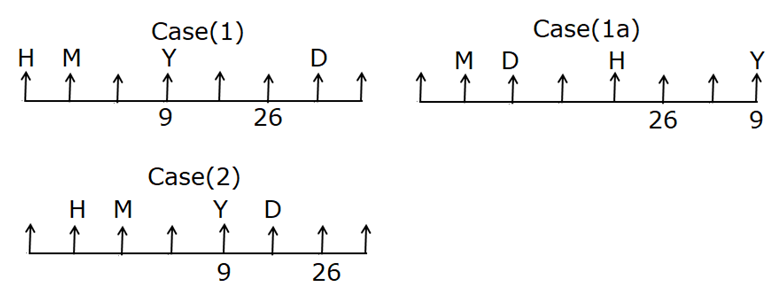
Again, we have:
- Q likes a number 5 more than F, who sits third to the right of the one who likes 14.
- F and Y sit together.
That means, in case (1) F sits immediate right of Y, in case (1a) & case (2) F sits immediate left of Y.
- The sum of the numbers liked by B and Q is twice the number liked by D.
- B doesn’t like an even number and sits third to the left of K. Q doesn’t like prime number.
- Since, Q doesn’t like prime number. D likes a prime number, thus we have only such possible combinations is (13, 21, 17).
That means, D likes 17, and B likes 13.
Case (1a) & case (2) are not valid.
Based on the above given information we have:
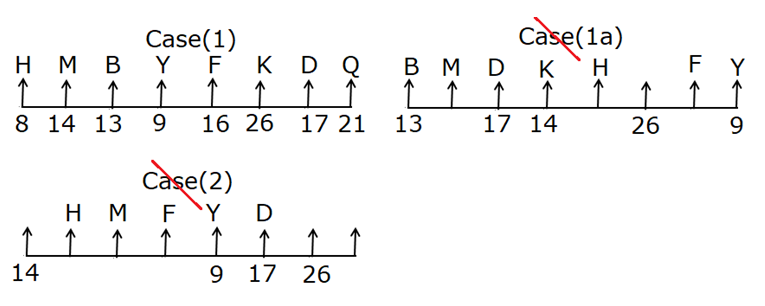
Case (1a) is not valid as no such place is available for Q, case (2) is not valid as B sits third to the left of K.
1) Answer: B
2) Answer: E
3) Answer: A
4) Answer: D
5) Answer: C
Directions (6-10) :

- There are three persons sit between R and Q.
- The person who sits two places away from Q sits fourth to the right of P.
- P sits neither adjacent to R nor adjacent to V.
- The person who sits immediate left of the vacant seat sits two places away from R.
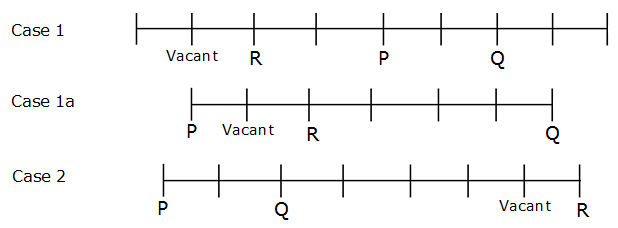
- T does not sit adjacent to R.
- U sits two places away from T.
- The number of persons who sits between Q and U is one less than the number of persons who sits between V and T.
- P does not sit at the end.
- T does not sits right of Q.
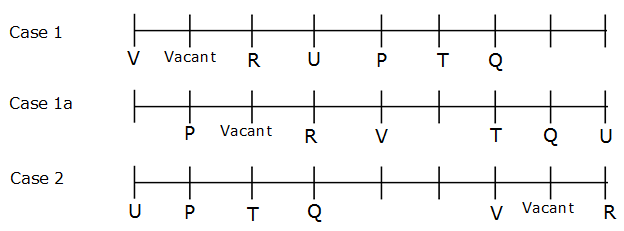
- W sits adjacent to Q. This eliminates case 1a.
- The number of persons who sits between T and S is same as the number of persons who sits between W and R. This eliminates case 1.
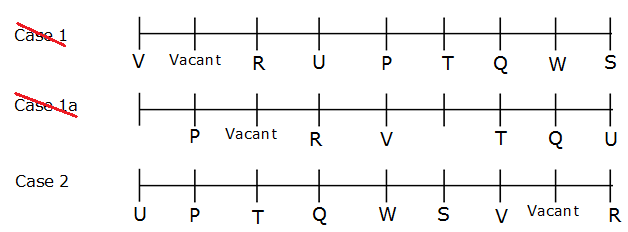
6) Answer: B
7) Answer: A
8) Answer: E
9) Answer: C
10) Answer: B





